It’s six thirty am and we are meeting at the carpark of Tirtha Empul, Bali’s most well known holy spring. This Hindu Balinese water temple in the cool highlands founded in 942 AD sees hundreds of visitors a day, coming to do a melukat or ritual cleanse. Surrounded by bathing pools and old growth trees and jungle, its peaceful aura emanates as you enter the area.
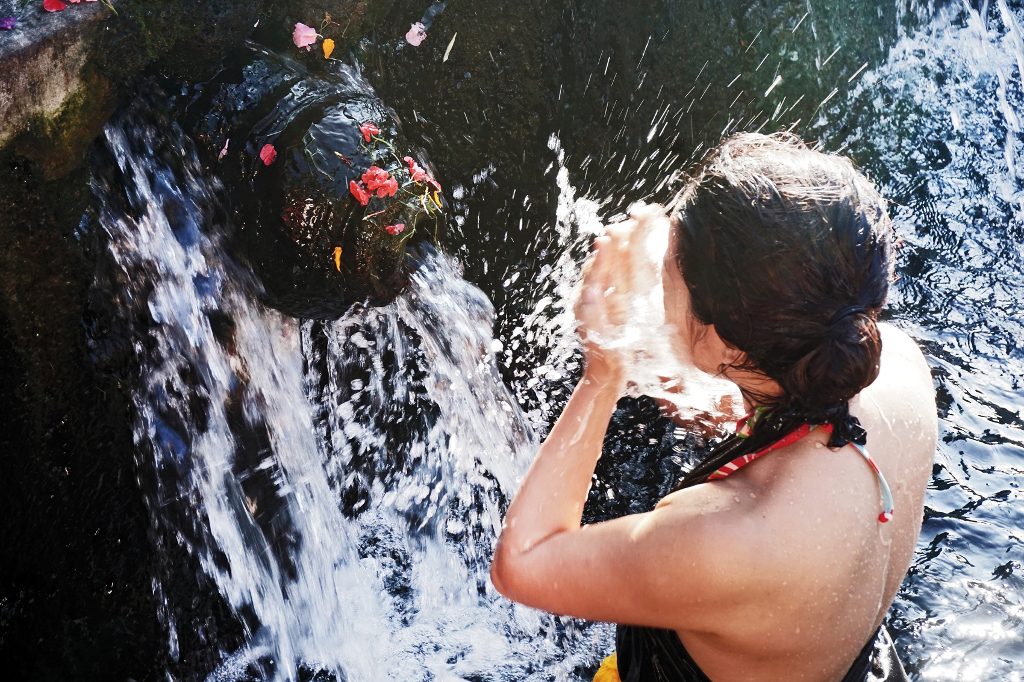
At six thirty we are the only people here. Our guide Made Karyasa has two guests who have just arrived from San Francisco the night before and this is their mystical first stop on their Bali visit. Made is no ordinary guide. He studies the Balinese religion, and follows the learning of the mangkus, the holy priests, so he has plenty of knowledge to offer to anyone who is interested.
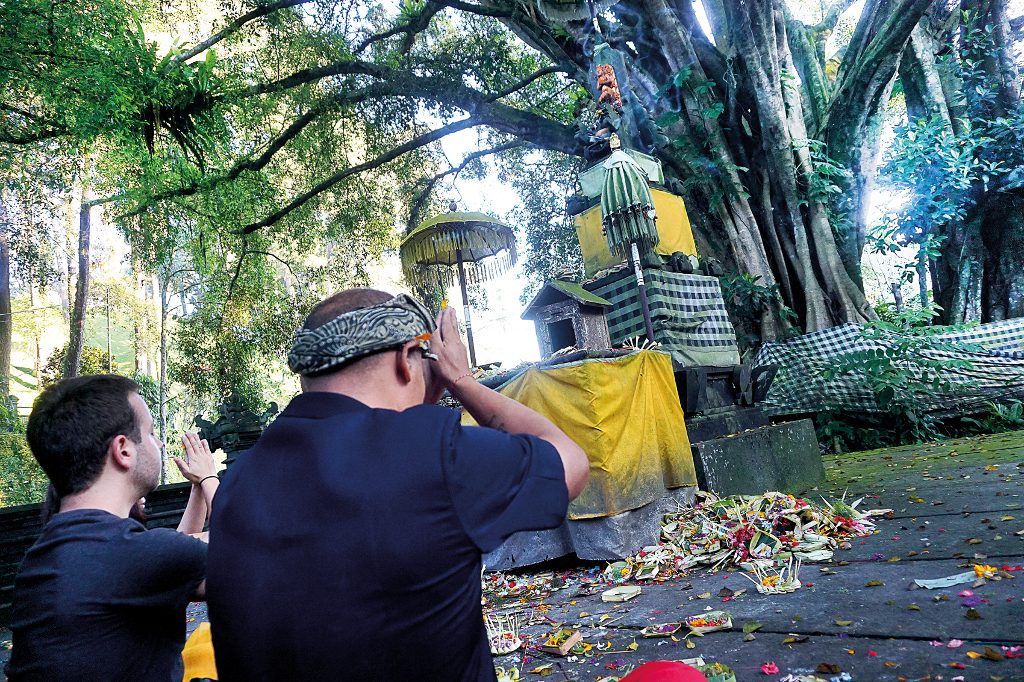
We stop at the first temple, home to Tirtha Empul’s protective gods. He explains how it works and gives a rudimentary synopsis of Balinese Hinduism and the need to make offerings. The cool morning air is beautiful and swathes of mist still touch the trees. Temple sweepers clean the piles of old offerings left from the day before.
After donning the obligatory sarong and selendang (sash) we proceed to the second temple to pray again and make more offerings. Made chants an ancient Sanskrit prayer, using low intonations of the melodic language. Wellbeing and peace surround us before entering the beautiful main holy spring and home to the purification pool.
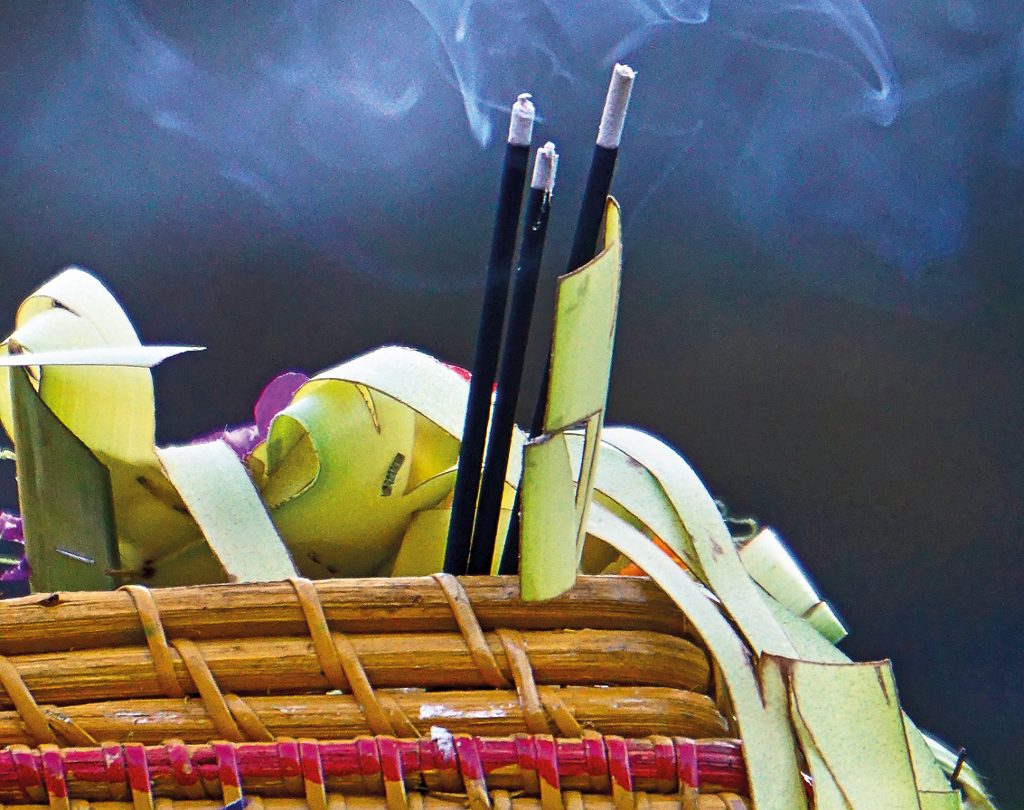
Water rushes from the ancient stone pipes carved with Hindu symbols. Demons and gods stand everywhere, all carved from the grey volcanic stone.
The cool water is clear and inviting and so fresh that fish dart about, looking for food. The complex is large with many different areas, some so sacred that only high priests can enter. But we go to the public pools. The guests are ready in their sarongs and slowly descend the carved granite steps and make their way to the gushing water spouts. The ritual is to stop at each one and be cleansed with pure cold spring water, which is so clean you could drink it directly. They move to each one, in turn until they are completely doused. We then head to a second pool where the process is repeated.
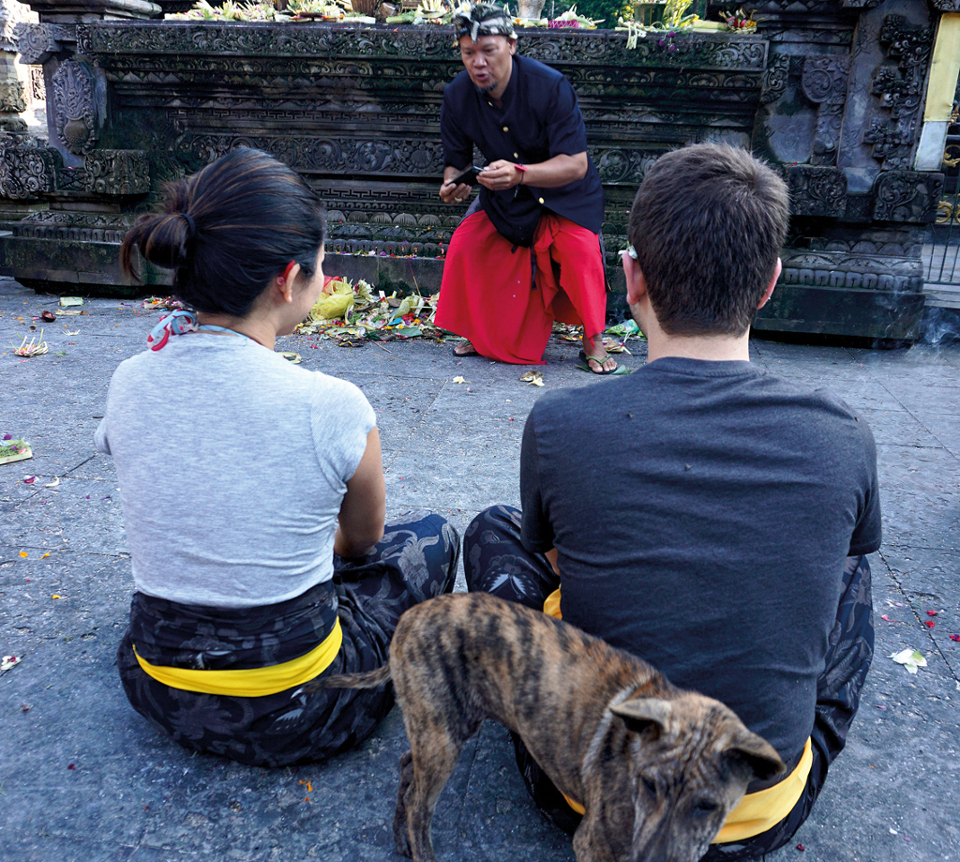
After the bathing is done, we head outside, while Made explains a little about the temple and the holy men who created it so long ago.
After they change into their very welcome dry clothes, we sit and enjoy some snacks in the still cool morning air, taking it all in and just trying to grasp the wonder of it all. Just as we are about to leave, a couple of groups of foreign tourists arrive, a lot more rambunctious, but still respectfully aware of their holy surroundings. As the day wears on, more and more people arrive and many will take a holy bath. It is becoming a popular activity on the tourist trail where actual engagement takes over from simply observing. It is always good to take a holy bath, no matter what persuasion we may believe in.
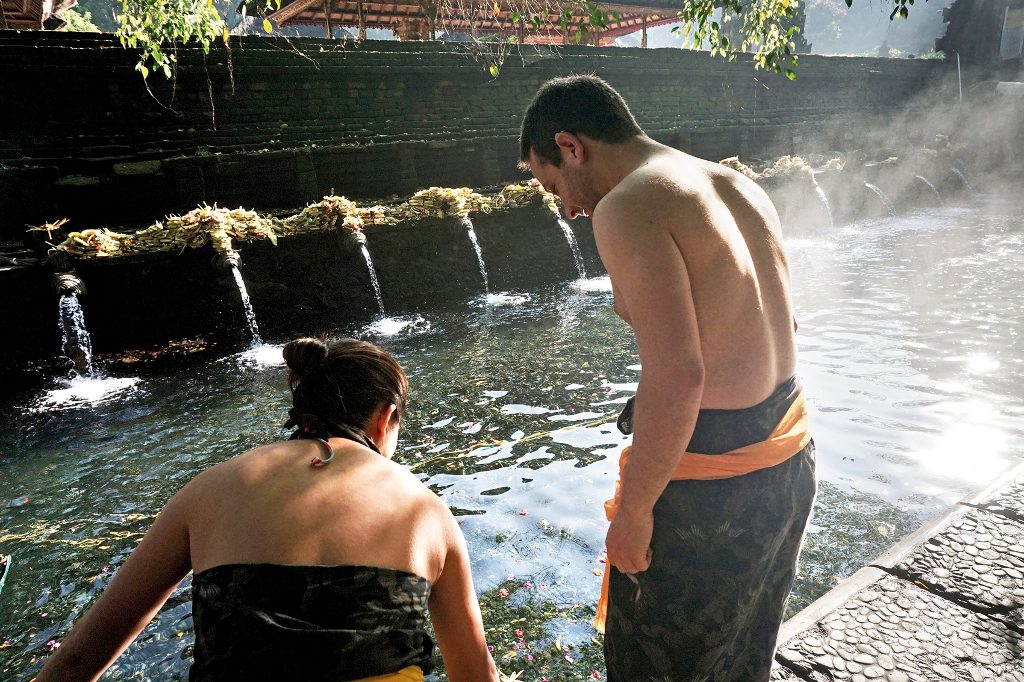
It pays to go early. Not only can you avoid the crowds and enjoy the special atmosphere, it is also cooler and the most beautiful time of the day.
Tirtha Empul is one of many holy water temples in Bali and arguably the most well known. It is dedicated to Vishnu, the Hindu God of water and the name actually means “holy water spring”
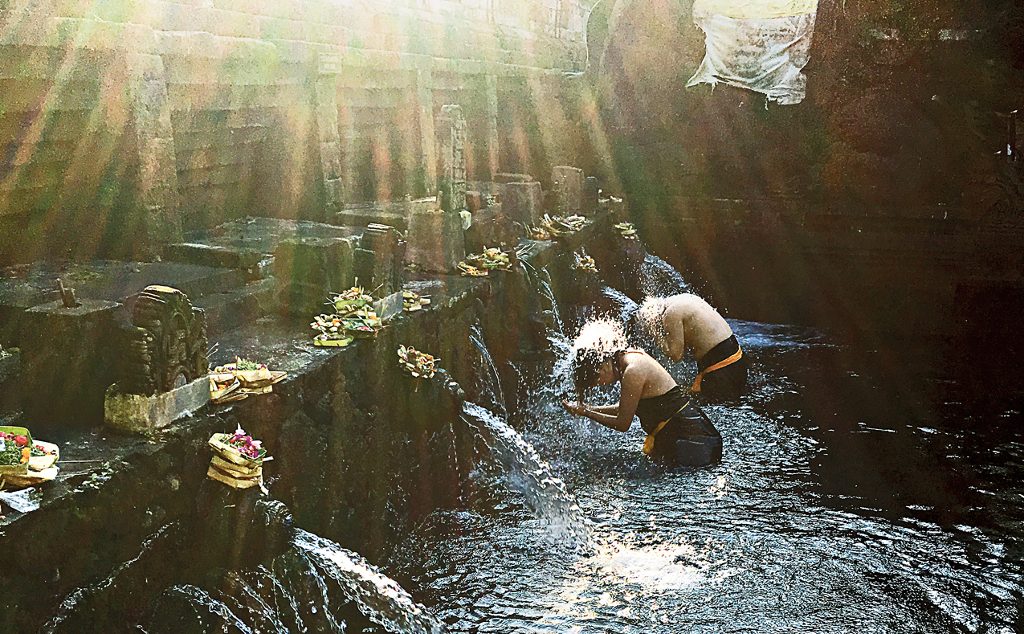
You can contact Made at E: buddhabalitours@gmail.com or his website – www.triubud.com.






